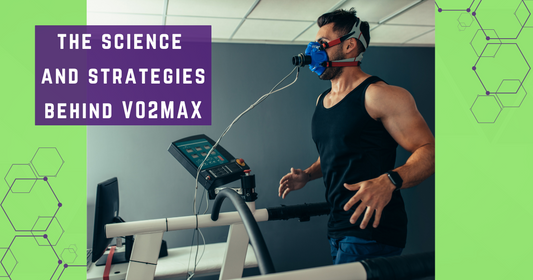Introduction
Exercise is more than just a way to stay in shape; it’s a key factor in living a longer, healthier life. The relationship between exercise and longevity is supported by extensive scientific research, showing that regular physical activity positively impacts cellular health and extends lifespan. This blog post will explore how different forms of exercise can enhance your longevity, the scientific evidence behind these benefits, and how much exercise is ideal for living a longer life.
The Link Between Exercise and Longevity
Exercise plays a crucial role in enhancing longevity. Physical activity has been shown to improve various bodily functions, including cardiovascular health, metabolic efficiency, and even mental well-being. One of the key ways exercise promotes longevity is through its impact on cellular health. Regular physical activity stimulates mitochondrial function, which is vital for energy production at the cellular level. Moreover, exercise helps to maintain telomere length, which protects our DNA and slows the aging process. These cellular benefits translate into a lower risk of chronic diseases and a longer, healthier life.
The Scientific Evidence for Exercise Extending Lifespan
Numerous scientific studies have demonstrated the powerful impact of exercise on extending lifespan. One of the most comprehensive studies, published in The Lancet, analyzed data from over 650,000 individuals and found that those who engaged in regular physical activity had a 20-30% lower risk of death from all causes. Even those who exercised less than the recommended amount still experienced a significant reduction in mortality risk.
A study in the American Journal of Epidemiology further supports these findings, showing that individuals who engage in at least 150 minutes of moderate-intensity exercise per week can add an average of 3.4 years to their life expectancy. This study highlights the cumulative effect of consistent physical activity on longevity, emphasizing that even moderate exercise can lead to substantial benefits over time.
Research published in Circulation, the journal of the American Heart Association, found that walking for just 30 minutes a day can reduce the risk of premature death by 20%. This study underscores the idea that regular, moderate exercise—such as brisk walking—can significantly improve lifespan by reducing the risk of chronic diseases like heart disease, stroke, and diabetes.
Moreover, a study in the journal Cell revealed that exercise can enhance cellular health by promoting autophagy, a process where the body cleans out damaged cells and regenerates new ones. This cellular "housekeeping" is crucial for maintaining tissue health and preventing age-related diseases. The study also found that exercise activates certain genes linked to longevity, suggesting that physical activity may influence the aging process at a molecular level.
Another significant piece of evidence comes from research published in Nature Communications, which showed that physical activity reduces the accumulation of senescent cells—often referred to as "zombie cells"—which no longer divide and contribute to aging and age-related diseases. Exercise was found to enhance the body’s ability to clear these cells, thus reducing inflammation and slowing the aging process.
These studies collectively provide robust evidence that exercise is not just a means of maintaining physical fitness but also a powerful tool for extending lifespan. The consistent finding across multiple studies is clear: regular physical activity reduces the risk of premature death and enhances overall longevity, making it one of the most effective interventions for a longer, healthier life.
The Different Forms of Exercise and Their Relation to Longevity
Cardio Exercise Cardio exercise, which includes activities like running, swimming, and cycling, is particularly beneficial for heart health. A healthy cardiovascular system is directly linked to longevity, as it reduces the risk of heart disease, the leading cause of death globally. A study published in the British Journal of Sports Medicine found that regular aerobic exercise can lower the risk of cardiovascular disease by up to 50%. Cardio also improves lung function, enhances circulation, and helps maintain a healthy weight, all of which contribute to a longer, healthier life.
HIIT Workout High-Intensity Interval Training (HIIT) has become increasingly popular due to its efficiency in improving fitness levels in a short amount of time. HIIT involves short bursts of intense exercise followed by periods of rest or low-intensity exercise. According to a study in the Journal of Physiology, HIIT can improve insulin sensitivity and reduce abdominal fat, which are critical factors in reducing the risk of chronic diseases like diabetes. Furthermore, HIIT has been shown to have a profound impact on mitochondrial function, enhancing the body’s ability to produce energy at the cellular level, which is essential for longevity.
Strength Training Strength training, or resistance training, is crucial for maintaining muscle mass and bone density, both of which naturally decline with age. A study published in the American Journal of Preventive Medicine found that older adults who engaged in strength training had a 46% lower risk of all-cause mortality compared to those who did not. Strength training helps preserve muscle mass, which is vital for mobility, balance, and overall physical function as we age. Additionally, it supports metabolic health by improving insulin sensitivity and reducing body fat, which are important for long-term health and longevity.
Sports Participating in sports offers a dynamic way to engage in physical activity while also promoting social interaction. Sports like tennis, soccer, or basketball provide cardiovascular benefits, improve coordination, and offer the mental health benefits of social engagement. A study in the Mayo Clinic Proceedings highlighted that people who regularly participate in team sports tend to have a longer life expectancy compared to those who don’t. The combination of physical exertion and social interaction in sports can also reduce stress, another key factor in promoting longevity.
The Benefits of Exercise for Longevity
Cardiovascular Health Regular exercise is one of the most effective ways to improve cardiovascular health. It strengthens the heart, lowers blood pressure, and improves circulation, all of which are critical for reducing the risk of heart disease. A study published in the New England Journal of Medicine found that people who engage in regular physical activity reduce their risk of developing heart disease by 30% to 40%. Maintaining a strong cardiovascular system is essential for longevity, as it ensures that the heart and blood vessels remain healthy, reducing the likelihood of life-threatening conditions.
Weight Management Exercise plays a key role in managing weight, which is crucial for preventing chronic diseases associated with obesity. According to the American Heart Association, regular physical activity helps burn calories, build muscle, and boost metabolism, all of which contribute to maintaining a healthy weight. Excess weight is linked to an increased risk of conditions like type 2 diabetes, heart disease, and certain cancers, all of which can shorten lifespan. By incorporating regular exercise into your routine, you can effectively manage your weight and reduce the risk of these life-threatening diseases.
Mental Health Exercise is not only beneficial for physical health but also for mental well-being. Regular physical activity has been shown to reduce symptoms of depression, anxiety, and stress. A study in the journal Frontiers in Psychology found that exercise increases the production of endorphins, the body’s natural mood enhancers, which can improve overall mental health. Good mental health is crucial for longevity, as chronic stress and mental health disorders can negatively impact physical health, increasing the risk of diseases and reducing lifespan.
Immune Function The immune system is our body’s defense against infections and diseases, and regular exercise plays a significant role in keeping it strong. According to research published in the Journal of Sport and Health Science, moderate exercise enhances the circulation of immune cells in the body, improving the body’s ability to fight off pathogens. A robust immune system is vital for longevity, as it reduces the risk of infections and illnesses that can shorten lifespan. Regular exercise helps maintain a strong immune system, supporting long-term health and vitality.
Reduced Risk of Chronic Diseases One of the most significant benefits of exercise is its ability to reduce the risk of chronic diseases. Regular physical activity helps regulate blood sugar levels, lower blood pressure, and improve cholesterol levels, all of which are important for preventing conditions like diabetes, hypertension, and heart disease. A study published in The Lancet showed that individuals who engage in regular physical activity have a 35% lower risk of developing cardiovascular disease and a 50% lower risk of developing type 2 diabetes. By reducing the risk of these chronic diseases, exercise significantly contributes to a longer, healthier life.
How Much Exercise is Right?
Finding the right balance of exercise is crucial for maximizing longevity. While too little exercise can lead to health problems, too much can also be harmful. The key is to find a routine that is sustainable and tailored to your individual needs. Generally, a combination of cardio, strength training, and flexibility exercises is recommended. Aim for at least 150 minutes of moderate-intensity aerobic activity or 75 minutes of vigorous activity each week, along with two days of strength training. However, the ideal amount of exercise may vary depending on age, fitness level, and health goals.
Connection Between Epigenetics and the Right Amount of Exercise for Longevity
Epigenetics, the study of changes in gene expression without altering the DNA sequence, has opened new doors in understanding the link between exercise and longevity. Research suggests that the right amount of exercise can positively influence epigenetic markers, leading to improved health outcomes and increased lifespan. For example, regular physical activity has been shown to modify gene expression related to inflammation, metabolism, and stress response, all of which play a role in aging and longevity. By understanding and applying these principles, you can tailor your exercise routine to maximize your genetic potential for a longer, healthier life.
Conclusion
Exercise is a powerful tool for maximizing longevity. By understanding the different forms of exercise and their benefits, you can create a routine that supports a longer, healthier life. From improving cardiovascular health to enhancing mental well-being, reducing the risk of chronic diseases, and supporting cellular health, regular physical activity is key to unlocking the secrets of a longer life. By finding the right balance and incorporating various types of exercise into your routine, you can take control of your health and increase your chances of living a long, fulfilling life.




